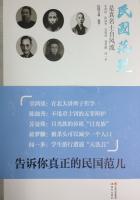From this interesting passage we learn that the ancient Mexicans, even before the arrival of Christian missionaries, were fully acquainted with the doctrine of transubstantiation and acted upon it in the solemn rites of their religion. They believed that by consecrating bread their priests could turn it into the very body of their god, so that all who thereupon partook of the consecrated bread entered into a mystic communion with the deity by receiving a portion of his divine substance into themselves. The doctrine of transubstantiation, or the magical conversion of bread into flesh, was also familiar to the Aryans of ancient India long before the spread and even the rise of Christianity. The Brahmans taught that the rice-cakes offered in sacrifice were substitutes for human beings, and that they were actually converted into the real bodies of men by the manipulation of the priest. We read that when it (the rice-cake) still consists of rice-meal, it is the hair. When he pours water on it, it becomes skin. When he mixes it, it becomes flesh: for then it becomes consistent; and consistent also is the flesh. When it is baked, it becomes bone: for then it becomes somewhat hard; and hard is the bone. And when he is about to take it off (the fire) and sprinkles it with butter, he changes it into marrow. This is the completeness which they call the fivefold animal sacrifice.
Now, too, we can perfectly understand why on the day of their solemn communion with the deity the Mexicans refused to eat any other food than the consecrated bread which they revered as the very flesh and bones of their God, and why up till noon they might drink nothing at all, not even water. They feared no doubt to defile the portion of God in their stomachs by contact with common things. A similar pious fear led the Creek and Seminole Indians, as we saw, to adopt the more thoroughgoing expedient of rinsing out their bodies by a strong purgative before they dared to partake of the sacrament of first-fruits.
At the festival of the winter solstice in December the Aztecs killed their god Huitzilopochtli in effigy first and ate him afterwards. As a preparation for this solemn ceremony an image of the deity in the likeness of a man was fashioned out of seeds of various sorts, which were kneaded into a dough with the blood of children. The bones of the god were represented by pieces of acacia wood. This image was placed on the chief altar of the temple, and on the day of the festival the king offered incense to it. Early next day it was taken down and set on its feet in a great hall. Then a priest, who bore the name and acted the part of the god Quetzalcoatl, took a flint-tipped dart and hurled it into the breast of the dough-image, piercing it through and through.
This was called killing the god Huitzilopochtli so that his body might be eaten. One of the priests cut out the heart of the image and gave it to the king to eat. The rest of the image was divided into minute pieces, of which every man great and small, down to the male children in the cradle, receive one to eat. But no woman might taste a morsel. The ceremony was called teoqualo, that is, god is eaten.
At another festival the Mexicans made little images like men, which stood for the cloud-capped mountains. These images were moulded of a paste of various seeds and were dressed in paper ornaments. Some people fashioned five, others ten, others as many as fifteen of them. Having been made, they were placed in the oratory of each house and worshipped. Four times in the course of the night offerings of food were brought to them in tiny vessels; and people sang and played the flute before them through all the hours of darkness. At break of day the priests stabbed the images with a weaver's instrument, cut off their heads, and tore out their hearts, which they presented to the master of the house on a green saucer. The bodies of the images were then eaten by all the family, especially by the servants, in order that by eating them they might be preserved from certain distempers, to which those persons who were negligent of worship to those deities conceived themselves to be subject.
3. Many Manii at Aricia















